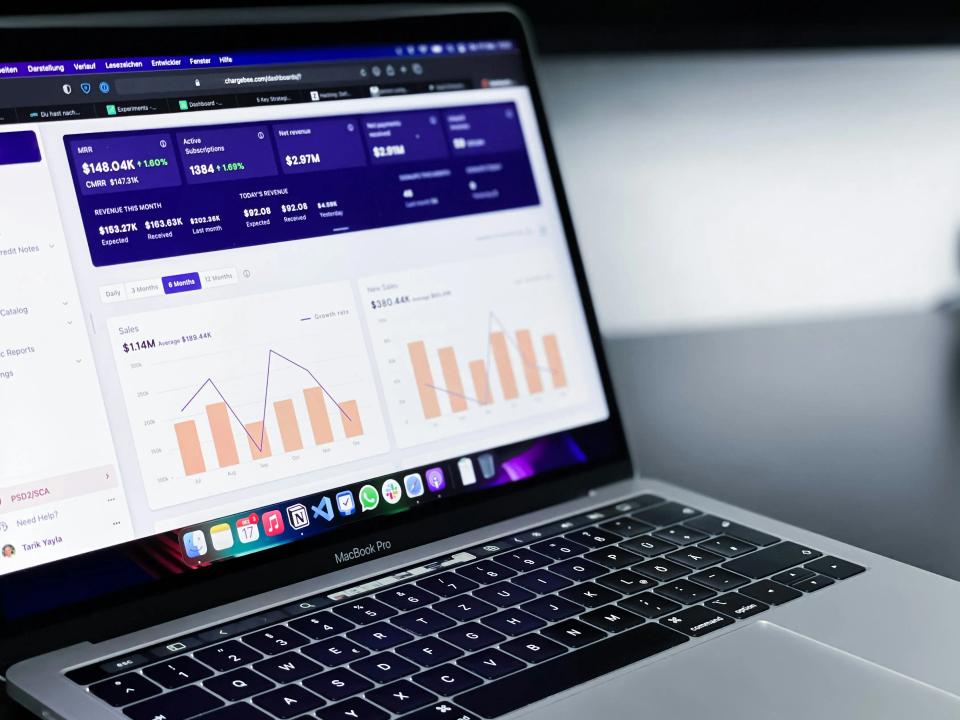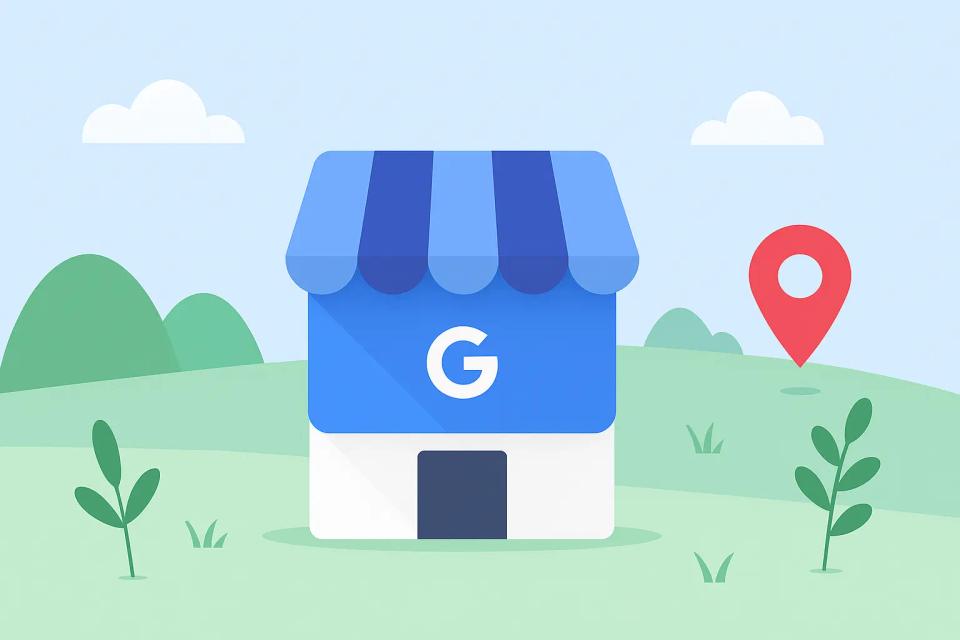Tired of seeing your competitors snag all the local customers? Do you lie awake wondering how to get more calls, more foot traffic, more sales from people right in your neighborhood? The truth is, your local market is a goldmine, but only if they can find you. If your business feels invisible online, you're leaving money on the table – money your competitors are happily scooping up.
Local SEO isn't just another marketing buzzword; it's the key to unlocking that local goldmine. It’s about making sure that when someone nearby searches for what you offer, your name is the first one they see. Consider this: a staggering 46% of all Google searches are for local information. That’s nearly half of Google’s massive search volume, all looking for businesses like yours.
This is where locally relevant content becomes your superpower. It’s not enough to just exist online; you need to speak directly to your community, addressing their unique needs and proving you’re the best choice right in their backyard. This kind of content doesn't just attract eyeballs; it builds trust, establishes authority, and turns local searchers into loyal customers. Ready to dominate your local market? Let's dive in.
Understanding Local SEO Content Fundamentals
So, what exactly transforms generic content into a local powerhouse? It’s about weaving your business into the very fabric of the community you serve. This isn't just about sprinkling in city names; it's about genuine connection.
What Makes Content "Local"
First, geographic relevance is paramount. Your content must scream "local." This means going beyond just mentioning your main city; talk about specific neighborhoods, landmarks, or even well-known streets if it makes sense for your audience. Think about the unique character of your service area and let that shine through.
Next, embrace the cultural context. Does your town have unique traditions, annual festivals, or even local slang? Tapping into these elements makes your content relatable and shows you're an insider, not an outsider. This builds an unspoken bond with your local audience, making them feel understood and seen.
Finally, foster a community connection. Your content should demonstrate that you're more than just a business operating in the community; you're part of it. Highlight local events you participate in, share stories about local people (with permission, of course), or offer insights that only a true local would know. This transforms your business from a faceless entity into a valued neighbor.
Key Components of Local SEO
To make that local content truly effective, several foundational SEO elements must be in place. Think of these as the engine that powers your local visibility. Without them, even the best content might never be seen by the right people.
Your Google Business Profile (GBP) is your digital storefront, often the first interaction a local customer has with your business online. Optimizing it with accurate information, compelling photos, and fresh posts is non-negotiable. According to Google, businesses with complete and up-to-date GBP listings are perceived as more reputable.
Then come local keywords. These are the specific phrases your neighbors are typing into Google when they need your products or services – think "best coffee shop downtown Anytown" or "emergency plumber [Your Neighborhood]". You also need location-specific pages on your website if you serve multiple areas or offer distinct services in different locales. Finally, NAP (Name, Address, Phone number) consistency across all online mentions of your business is crucial; inconsistencies confuse search engines and customers alike, eroding trust and harming your rankings.
Strategies for Creating Locally Relevant Content
Knowing what local content is and why it’s vital is one thing. Actually creating it effectively? That’s where the magic happens, turning your website into a magnet for local customers. It starts with understanding what your community is searching for and then delivering it in compelling formats.
Keyword Research for Local Content
You can't hit a target you can't see. That's why using location-based keywords is the bedrock of your local content strategy. Instead of just "pizza delivery," you need to target "pizza delivery Northwood" or "best deep-dish near City Park." This simple shift focuses your efforts on people who can actually buy from you.
But how do you unearth these golden phrases? Finding local search terms involves more than just guessing. Tools like Google Keyword Planner (filtered by location), Google Trends (for local interest over time), and even browsing local forums or social media groups can reveal the exact language your customers use. Pay attention to "near me" searches, as mobile searches for “... near me” have grown by over 200% in recent years.
Crucially, you must strive for understanding local search intent. What does someone really want when they search "emergency roof repair Anytown"? They need help, fast. Your content should immediately address that urgency and provide a clear solution, not just a list of services.
Content Types That Work for Local SEO
Once you know what your local audience is looking for, how do you present the answers? Certain content types are particularly powerful for local SEO, helping you connect, inform, and convert. These formats are designed to resonate deeply with a geographically defined audience.
Location-specific landing pages are essential if you serve multiple distinct areas. Each page should be tailored with unique content, testimonials, and case studies relevant to that specific neighborhood or city. This shows locals you understand their specific context, not just the general region.
Don't underestimate the power of local news and events coverage. Sponsoring a local Little League team? Hosting a charity drive? Write about it! This not only provides fresh content but also positions your business as an active community participant. Similarly, community spotlight articles, featuring other local businesses (non-competitors, of course) or local heroes, can build goodwill and valuable local backlinks.
Consider creating local resource guides, such as "The Ultimate Guide to Dog-Friendly Parks in [Your County]" or "Top 5 Family Restaurants in [Your Town]." These highly shareable pieces provide genuine value and establish your site as a go-to local information hub. Finally, develop area-specific FAQs that answer the common questions your local customers have, demonstrating your expertise and saving them time.
Optimizing Content for Local Search
Creating fantastic local content is a huge step. But if Google can't understand its local relevance, or if users find it clunky, your efforts might fall flat. Optimization is key to ensuring your content gets seen by the right local eyes and delivers a seamless experience.
On-Page SEO Elements
Think of on-page SEO as the signposts that guide search engines and users to the most important information. For local content, these signposts need to scream "local!" Your title tags and meta descriptions are your first handshake in the search results; infuse them with your primary local keyword and a compelling reason to click.
Use header tags (H1, H2, H3) to structure your content logically, incorporating local keywords naturally within them. This helps both users and search engines quickly grasp the page's topic and geographic focus. Implementing local schema markup is like giving Google a cheat sheet about your business – your address, phone number, opening hours, service area – making it easier for them to display this information accurately in local search results, like the map pack. Don't forget image optimization with local alt text; describe your images using local context, like "Springfield's favorite bakery's custom cake display," to help them appear in image searches and improve accessibility.
Local Content Structure
How you organize your local content on your site also plays a critical role. If you serve multiple towns or neighborhoods, clearly define your geographic service areas on your website, perhaps with dedicated pages or sections. This clarity helps users and search engines understand the scope of your operations.
Your calls to action (CTAs) need a local touch too. Instead of a generic "Contact Us," try location-specific CTAs like "Call Our Downtown Austin Office" or "Get a Quote for Services in Round Rock." This small change can significantly improve conversion rates by making the next step feel more relevant and immediate. And with so many local searches happening on the go, mobile optimization for local searches is absolutely non-negotiable. Indeed, 76% of people who search on their smartphones for something nearby visit a business within a day (page 4), so a clunky mobile experience is like slamming the door in their face.
Building Local Authority
Ranking well locally isn't just about what's on your website; it's also about how your business is perceived within the local digital ecosystem. Building local authority means establishing your business as a trusted, recognized, and reputable entity in your community. This involves earning local "votes of confidence" in the form of links and mentions.
Local Link Building
Think of local links as endorsements from other respected local entities. One powerful strategy is forming partnerships with local businesses. This could involve co-hosting an event, offering reciprocal discounts, or guest blogging on each other's sites, leading to valuable local backlinks.
Active community involvement also pays dividends in local SEO. Sponsoring a local sports team, participating in community fairs, or supporting local charities can lead to mentions and links from local news sites, event pages, and community organizations. Furthermore, ensure your business is listed accurately and consistently in reputable local directory listings like Yelp, the local Chamber of Commerce, and niche industry directories. According to BrightLocal, 87% of consumers read online reviews for local businesses, and directories are often where they find them.
Local Content Distribution
Creating amazing local content is only half the battle; you need to get it in front of your local audience. Strategic distribution amplifies your reach and impact. Don't just publish and pray; actively promote your local stories.
Leverage social media targeting to push your content to users in specific geographic areas. Platforms like Facebook and Instagram offer robust location-based advertising options, allowing you to reach your neighbors directly. Explore local PR opportunities by building relationships with local journalists, bloggers, and radio hosts who might be interested in featuring your business or events. A well-timed press release about a community initiative can earn significant local exposure. Finally, participate constructively in community forums and groups online (like local Facebook groups or Nextdoor). Share your relevant content when appropriate, focusing on being helpful rather than overtly promotional.
Measuring Local Content Success
How do you know if your local content marketing efforts are actually moving the needle? You can't improve what you don't measure. Tracking the right metrics will reveal what's working, what's not, and where to focus your energy for maximum local impact. This data-driven approach turns guesswork into strategy.
Key Metrics to Track
Keep a close eye on your local search rankings for your target keywords. Are you appearing in the coveted "map pack" or the top organic results for searches like "[your service] in [your city]"? Tools specifically designed for local rank tracking can provide this crucial visibility.
Analyze your geographic traffic distribution using Google Analytics. Where are your website visitors actually coming from? If you're targeting Austin, but most of your traffic is from Dallas, your local content strategy needs adjustment. The goal is to see an increase in traffic from your desired service areas.
Ultimately, it's about results. Monitor your local conversion rates. Are visitors from your target locales taking desired actions, like calling your business, filling out contact forms, or requesting directions? Tracking these conversions, perhaps by setting up goals in Google Analytics, shows the real ROI of your local content. Remember, even a slight improvement in ranking can have a big impact; for instance, the #1 result in Google’s organic search results has an average CTR of 31.7%, significantly higher than lower positions.
Tools for Local SEO Analysis
Several tools can help you dig deeper into your local SEO performance. Google Analytics location reports are invaluable for understanding where your website visitors are geographically located and how users from different areas behave on your site. This can highlight which local content pieces are resonating most strongly.
Specialized local rank tracking software goes beyond general SEO tools by monitoring your rankings in specific geographic areas, often down to the ZIP code level. This gives you a precise view of your visibility to local searchers. To understand how local users interact with your content, user behavior analytics tools like heatmaps and session recordings can be incredibly insightful, showing you what they click on, how far they scroll, and where they might be encountering friction.
Best Practices and Common Mistakes
Navigating the world of local SEO content can feel like a tightrope walk. Get it right, and you’ll see a flood of local customers. Get it wrong, and you could be shouting into the void. Let's look at some crucial do's and don'ts to keep you on the path to local success.
Do's
First and foremost, create unique content for each location if you have multiple branches or service distinct areas. Resist the urge to simply copy and paste content, changing only the city name. Each community has its own nuances, and your content should reflect that understanding, offering genuine local flavor.
Include local testimonials and reviews prominently on your website, especially on location-specific pages. Social proof from neighbors is incredibly persuasive and builds immediate trust. When potential customers see that people just like them, in their own town, have had great experiences, it significantly boosts their confidence in choosing you.
Finally, update content regularly. Local information can change – new businesses open, old ones close, events come and go. Keeping your local guides, event calendars, and business information fresh and accurate not only serves your audience better but also signals to search engines that your site is active and relevant.
Don'ts
One of the biggest pitfalls is duplicate content across locations. Creating nearly identical pages for different cities or neighborhoods is a red flag for search engines and offers a poor user experience. Each page should offer distinct value and genuinely cater to its specific local audience.
Another common error is to ignore local user intent. Don't just stuff keywords onto a page. Understand why someone in your area is searching for a particular term and craft content that directly addresses their need, question, or problem. Are they looking for information, a quick solution, or to make a purchase?
And critically, do not neglect mobile optimization. A huge percentage of local searches happen on smartphones, often when users are out and about and ready to take action. If your website is difficult to navigate or slow to load on a mobile device, you're losing potential customers at the exact moment they're looking to connect.
Case Studies: Local Content in Action
Let's imagine "Maria's Downtown Deli." For years, Maria relied on foot traffic, but new cafes were popping up, and her lunch rush was dwindling. She felt invisible online. Her website was generic, with no mention of her daily specials sourced from the local farmer's market or her popular "Neighborhood Hero" sandwich, named after a beloved local firefighter.
Then, Maria invested in a local content strategy. She created a blog post titled "Why Downtown Anytown Runs on Maria's Coffee & Community," highlighting her locally sourced ingredients and her involvement in downtown revitalization projects. She added location-specific pages for "Catering Services Anytown Financial District" and "Best Lunch Specials Near City Hall," packed with testimonials from nearby office workers. She even started a "Meet the Maker" series on her blog, featuring the local farmers and artisans who supplied her deli.
The results? Within three months, online orders for catering in the financial district increased by 40%. Her Google Business Profile saw a 60% jump in clicks for directions. Foot traffic during lunch picked up, with new faces mentioning they'd found her "Best Lunch Specials" page online. Maria learned that speaking directly to her community, highlighting what made her deli uniquely local, was the recipe for renewed success and a stronger connection with her customers. This wasn't just about SEO; it was about becoming a recognized and cherished part of her local landscape.
Future of Local SEO Content
The digital landscape is always shifting, and local SEO is no exception. To stay ahead and keep those local customers flocking to your door, you need to anticipate what's next. The future of local search is becoming even more intuitive, immediate, and personalized.
Voice Search Optimization
"Hey Google, find a plumber near me that's open now." Voice search optimization is no longer a futuristic concept; it's a present-day reality. Content needs to be structured to answer conversational queries directly. Think about how people actually speak when they're looking for local services and craft your content, especially FAQs and Google Business Profile Q&As, to match that natural language.
Mobile-First Considerations
While mobile optimization is already crucial, mobile-first considerations will only deepen. This means designing the user experience primarily for mobile devices and then adapting it for desktops, not the other way around. Page speed, easy navigation with a thumb, and click-to-call buttons are paramount, as users expect instant information and effortless interaction on the go.
Emerging Local Search Trends
Keep an eye on emerging local search trends like the increasing use of AI to personalize search results and the growth of "zero-click" searches, where users get their answers directly from the search results page (often from a well-optimized Google Business Profile). This means your GBP needs to be a rich source of information. Hyper-local targeting, focusing on very specific neighborhoods or even blocks, will also become more prevalent, demanding even more granular local content.
Conclusion: Your Local Market Awaits
You've seen the power, the potential, the necessity of local SEO content marketing. It’s not just about ranking higher; it’s about forging real connections with the people right outside your door, the ones most likely to become your loyal customers. It’s about transforming your business from just another option into the obvious choice for your community.
To recap, remember these key takeaways: understand what makes content truly local, build a strong foundation with optimized local SEO components, and create compelling, targeted content that speaks directly to your neighbors' needs. Optimize that content meticulously, build your local authority through community engagement and smart link building, and always measure your success to refine your approach. Avoid common pitfalls like duplicate content and neglecting mobile, and keep an eye on the future to stay ahead.
The time to act is now. Don't let another day pass where potential local customers can't find you. Start implementing these strategies, and watch your local visibility, engagement, and sales grow. Your community is searching – make sure they find you.













